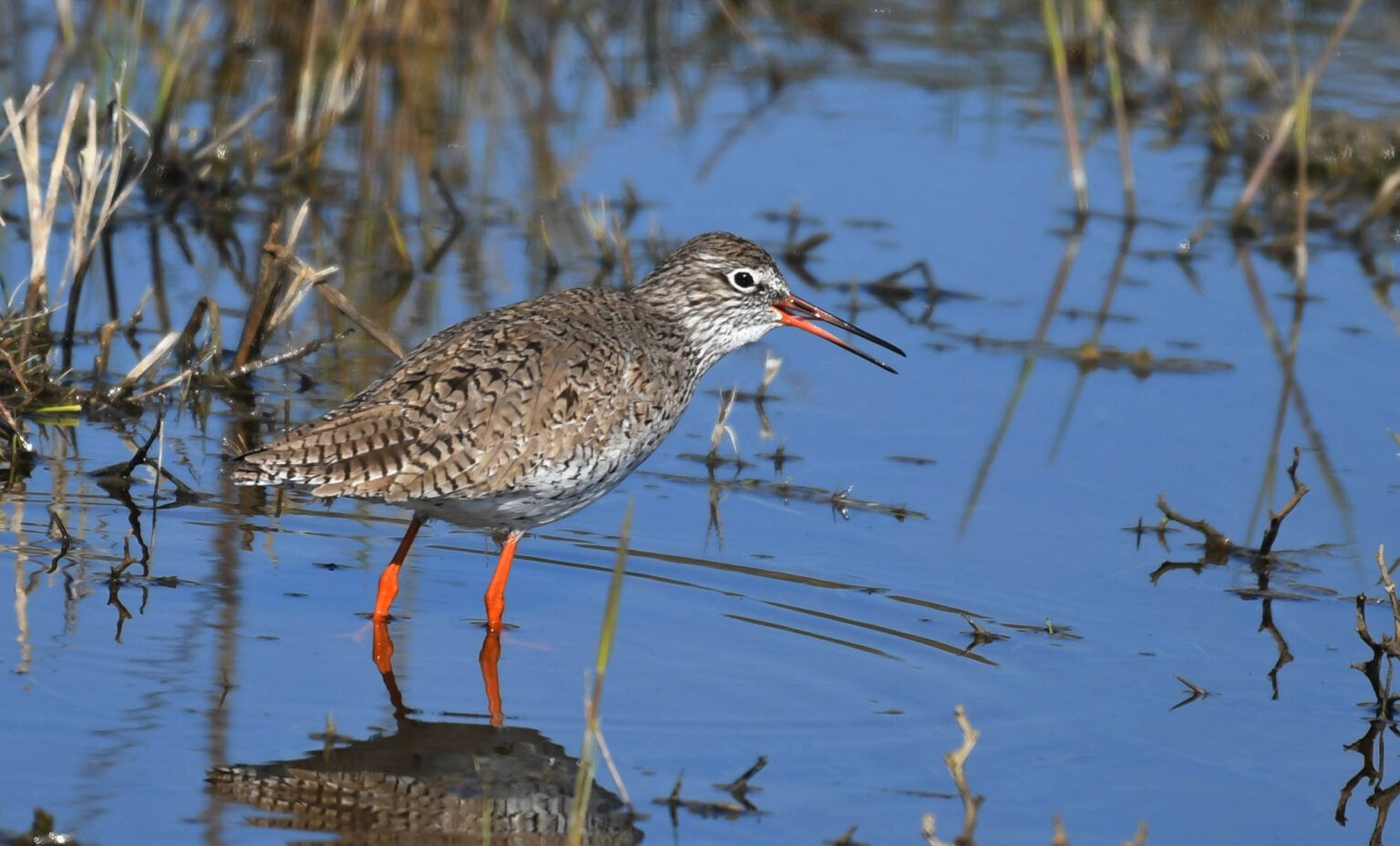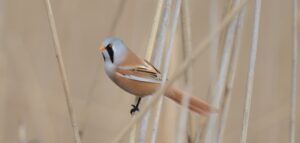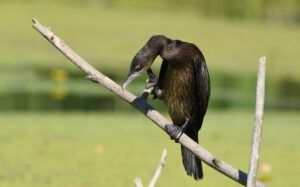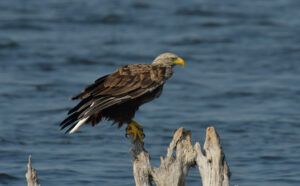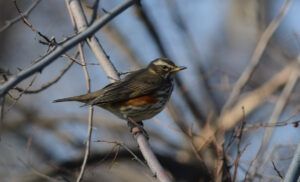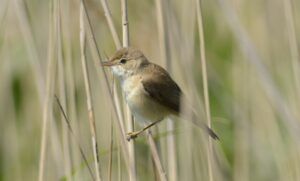The Common Redshank or simply Redshank (Tringa totanus) is an Eurasian wader in the large family Scolopacidae.
Common Redshanks in breeding plumage are a marbled brown color, slightly lighter below. In winter plumage they become somewhat lighter-toned and less patterned, being rather plain greyish-brown above and whitish below. They have red legs and a black-tipped red bill, and show white up the back and on the wings in flight.
The Spotted Redshank (T. erythropus), which breeds in the Arctic, has a longer bill and legs; it is almost entirely black in breeding plumage and very pale in winter. It is not a particularly close relative of the Common Redshank, but rather belongs to a high-latitude lineage of largish shanks. T. totanus on the other hand is closely related to the Marsh Sandpiper (T. stagnatilis), and closer still to the small Wood Sandpiper (T. glareola). The ancestors of the latter and the Common Redshank seem to have diverged around the Miocene-Pliocene boundary, about 5-6 million years ago. These three subarctic- to temperate-region species form a group of smallish shanks with have red or yellowish legs, and in breeding plumage are generally a subdued light brown above with some darker mottling, and have somewhat diffuse small brownish spots on the breast and neck.
Subspecies
Several subspecies have been identified. These include:
- T. t. robusta: identified by Schiøler, 1919 found in Iceland and the Faroe Islands.
- T. t. ussuriensis: identified by Buturlin 1934 found in southern Siberia, Mongolia and east Asia
- T. t. terrignotae: identified by Meinertzhagen, R & Meinertzhagen, A, 1926 found in southern Manchuria and eastern China
- T. t. craggi: identified by Hale, 1971 found in north west China
- T. t. eurhina: identified by Oberholser, 1900 found in Tajikistan, north India and Tibet
It is a widespread breeding bird across temperate Eurasia. It is a migratory species, wintering on coasts around the Mediterranean, on the Atlantic coast of Europe from Great Britain southwards, and in South Asia. They are uncommon vagrants outside these areas; on Palau in Micronesia for example, the species was recorded in the mid-1970s and in 2000
They are wary and noisy birds which will alert everything else with their loud piping call. Like most waders, they feed on small invertebrates. Redshanks will nest in any wetland, from damp meadows to saltmarsh, often at high densities. They lay 3-5 eggs.
The Common Redshank is one of the species to which the Agreement on the Conservation of African-Eurasian Migratory Waterbirds (AEWA) applies.
It is widely distributed and quite plentiful in some regions, and thus not considered a threatened species by the IUCN.
Comun bird in the Danube Delta, easy to find it in marsh, canals or Black Sea coast.
photo: Mihai BACIU

